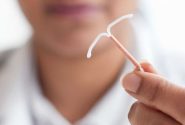MONDAY, May 20, 2024 (HealthDay News) — (Tasrir) — In an analysis published last week in the Journal of Clinical Oncology, researchers discovered that applying talcum powder to the genitals was linked to ovarian cancer risk, and that raised risk was greater for people who used the powder a lot or for long periods of time.
In the study, scientists from the National Institutes of Health turned to data from the Sister Study, which enrolled more than 50,000 women in the United States from 2003 to 2009.
The participants joined when they were between the ages of 35 and 74. Each had a sister who’d been diagnosed with breast cancer, which might put them at increased risk for breast or ovarian cancer.
J&J has argued that previous studies have not demonstrated a convincing link between ovarian cancer and talc-based products, NBC News reported, but the new study challenges that line of reasoning. Most of the J&J lawsuits have been consolidated into a single federal case in New Jersey, with that trial scheduled to start in December, NBC News reported.
“This study is quite timely. We feel like it completely affirms and confirms the position taken by plaintiffs’ experts,” Leigh O’Dell, co-lead counsel for a group of attorneys appointed to act on behalf of the many people with cases pending against J&J, told NBC News.
But Erik Haas, J&J’s worldwide vice president of litigation, said the new analysis doesn’t definitively establish causality.
“This study does not change the overwhelming evidence that talcum powder does not cause ovarian cancer,” he told NBC News.
In the new study, women were asked how often they used talcum powder on their genitals between the ages of 10 and 13 and during the year before they enrolled in the study. Researchers followed up with surveys from 2017 to 2019 that asked women about their lifetime use of talc powder.
Based on those responses, the researchers estimated that up to 56% of the women used talcum powder on their genitals at some point in their lives. These women were more likely to be Black, less educated and live in the South.
The analysis can’t prove that talc causes ovarian cancer, but study co-author Dale Sandler, chief of the epidemiology branch at the National Institute of Environmental Health Sciences, said there probably isn’t a way to fully prove causality in human studies.
“You can’t do a clinical trial and randomize people to ‘powder’ and ‘no powder.’ So we’re going to need to look to other types of research,” she told NBC News.
Still, the findings should prompt women to rethink their use of talcum products, said lead study author Katie O’Brien, an epidemiologist at the National Institute of Environmental Health Sciences.
“We’re not aware of any medically necessary reasons why someone would need to use talcum,” she noted.
Importantly, current formulations of J&J’s baby powder use cornstarch, not talc.
Talc and asbestos are found in close proximity in nature, so some raw talc collected via mining may be contaminated with asbestos, according to the U.S. Food and Drug Administration.
O’Brien added that some talc products may also contain phthalates — chemicals that disrupt hormones in the body and have been linked to ovarian cancer. Plus, talc itself can be abrasive, she added, so it may cause inflammation, which is independently associated with ovarian cancer risk.

















